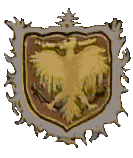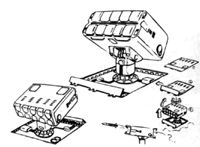

Designation:Prometheus-class Submersible Aircraft Carrier (CVS) |

|

|
|||

|
|||||
| CVS-101 | Prometheus | NNS | Commissioned 2008 | Operational loss at Macross Island, 2009. |
| CVS-102 | Heracles | VSEL | Commissioned 2008 | Destroyed at Newport News in Zentraedi holocaust, 2011. |
| CVS-103 | Vulcan | DCN | Commissioned 2009 | Sunk in the Skaggerak during 2nd Robotech War, 2030. |
| CVS-104 | Neptune | NNS | Commissioned 2009 | Sunk in the Atlantic in Zentraedi holocaust, 2011. |
| CVS-105 | Ceres | DCN | Commissioned 2010 | Sunk in the White Sea during Invid Invasion, 2031. |
| CVS-106 | Phoebe | NNS | Commissioned 2010 | Missing and presumed lost in the Pacific Ocean, ca. 2031. |
| CVS-107 | Chronos | VSEL | Commissioned 2011 | Sunk in the South Atlantic, 2016. |
| CVS-108 | Hyperion | DCN | Commissioned 2011 | Sunk in the Indian Ocean during 2nd Robotech War, 2029. |
| CVS-109 | Demeter | VSEL | Commissioned 2011 | Abandonned by the RDF 2031, commissioned in the European Navy 2044, demilitarised in 2048 and in use as a museum ship. |
| CVS-110 | Bacchus | NNS | Commissioned 2014 | Sunk off the California coast during 2nd Robotech War, 2030. |
| CVS-111 | Pluto | NNS | Commissioned 2015 | Sunk in the Caribbean Sea during the Invid Invasion, 2031. |
| CVS-112 | Uranus | NNS | Commissioned 2016 | Scrapped after 2nd Robotech War, 2031. |
| CVS-113 | Persephone | DCN | --- | Scrapped on the building way, 2018. |
| CVS-114 | Cerberus | DCN | --- | Scrapped on the building way, 2018. |
These ships were built by the Newport News Shipbuilding (NNS, Newport News,
USA), Vickers Shipbuilding and Engineering Limited (VSEL, Barrow-in-Furness,
UK), and DCN (Brest, France) shipyards.
Rotterdam Dockyard Company (Rotterdam, Netherlands) and Kobe Works (Kobe, Japan) were building ships of
this class as well, but never completed one before their construction.

See Naval air group compositions for a detailed summation. The hangar could accomodate approximately 180 aircraft, veritechs and helicopters.
For obvious reasons, a deck park system could not be used on these carriers. Should such a park be used, the Prometheus would be able to operate over 450 planes and helicopters (until such time as the ship submerged).
However, this number could not be used effectively; the number of catapults, aircraft ground crew and the single landing deck limited the effective air group to at best 200 aircraft.
The Prometheus class resembled a conventional carrier from the outside, although one of a size never before seen. The interior was very different due to the submersible design and mecha hangars. The upper decks in the hull were built to accommodate the largest of battloid mecha, and were thus 14.5 meters high. These two decks accounted for almost half the vessel's hull height. There were twelve mecha-sized elevators serving these and the top deck.
Below these were normal sized decks housing crew, armories, magazines, workshops and all the rest needed to keep over 3,000 men in fighting shape for a deployment length of up to 12 months. They also included the engineering spaces. Fission reactors were used rather than Reflex furnaces, because at the time of design, these latter were only limited available. The entire side protection system against torpedo hits doubled as a ballast tank, and additionally, what appeared to be the lowest deck level was in fact also comprised of numerous ballast tanks. All these tanks were needed to overcome the enormous flotation ability inherent in so large a vessel.
Due to extensive automation these giant vessels needed less crew than their smaller predecessors. With a crew of 3,500, these vessels had almost half the complement of their smaller ancestors and contemporaries.
As submarines these ships were hampered by their carrier design, and their speed was a fraction of what nuclear submarines could make. In addition, there was no way these ships could run silently, and therefore no silencing measures were seriously considered. Hence, in a conflict with Earth navies the class would be one large target for the opponents' submarines, and would need a large force of attack submarines as escort. It was thought however, that space borne invaders would not have the necessary sonar expertise to track these noisy vessels. This assumption proved to be correct.
After the crash-landing of the SDF-1 on Macross Island, military strategists realised that fighting a Robotech war, which would occur mainly in space, would mean that the planet-bound armed forces would become far less important and effective. Against large starships with directed energy weapons, visible forces on the surface would be extremely vulnerable.
Though this was widely accepted, there was a strong body of Navy and Army officers that pushed for improvements of their forces, ostensibly to provide back-up for the new space forces, and to safeguard the United Earth Government from interior uprisings. The Navy was especially vocal, since their most capable warships, the Nimitz-class supercarriers and their derivatives, were all surface ships, and thus powerless against an opponent who would sit in orbit and bombard them at leisure. Thus the RDF Navy began a campaign to incorporate Robotechnology into vessel designs, and succeeded in getting funding for their new projects.
As a consequence, submersible warships of unprecedented size were constructed on the rationale that when submerged, orbiting ships would be far less likely to detect them. The ships would then surface when the enemy forces were below the horizon, launch and/or recover their forces and submerge again before they could be spotted. In this manner, the RDF would be assured of a powerful air presence on the planet even if the orbitals were lost to an enemy. The Navy won the funding for these ships and started construction on what became the Prometheus class.
Three of the first four hulls laid down were transferred to the UN Spacy for use in their test programs, and were refitted with anti-gravity sytems and reaction engines. Ironically, the last of the first series of four, the class vessel Prometheus herself, would be the ship to log the most space-hours, even though she was completed as a carrier and totally unsuited for space duties. She was completed in time to be present at Macross Island on the launch day of the SDF-1 and was caught up in the emergency spacefold the SDF-1 made that day. The crew of the Prometheus partly survived; those that were on deck and in other unprotected spaces died, but those that were below decks in the airtight bowels of the ship lived, and were hastily incorporated into the crew of the battlefortress. The subsequent changes the SDF crew made on the carrier hull ensured that it would never again sail the seas; for instance, all propulsion systems were removed.
Until the Zentraedi Holocaust, further Prometheus class vessels were completed at a high rate, and when the Zentraedi attack finally came, two years later, 8 vessels had been completed.
Of these vessels, Heracles was in the Kobe Works shipyard for repairs after the ship was damaged by an anti-unificationist sea mine. The vessel was destroyed with the rest of the area when this important industrial center was targeted by Dolza's fleet with a heavy particle beam. Her sister ship Neptune was sunk in the Atlantic, when she was caught in shallow water close to the Azores. The ship took a direct hit and broke in two, then sank in minutes. All other vessels managed to survive by diving deep during Dolza's defold procedures. As their designers had intended, the vessels could not be targeted by orbital craft while under water. The five units of the class on the building ways, however, were destroyed. These were the Bacchus, Pluto, Uranus, Persephone and Cerberus. After the First Robotech war, the RDF rebuilt some yards and started constructing five more Prometheus-class carriers. These ships, given the name and number of five craft that were destroyed in the Holocaust, were meant as a replacement for the losses of this class, which was proving to be quite useful in the relief efforts immediately following the holocaust. Only three of these ships, Bacchus, Pluto and Uranus, were to be completed though, because of advances in Robotechnology that made orbital forces more effective as deterrents.
Before this happened, though, the class was well utilised, especially during the Malcontent Zentraedi Uprisings, when these ships served in the mobile base role for which they were designed. The vessels were positioned off a hostile coast and provided the mecha teams with support that was not possible otherwise, with land bases being short-lived against Zentraedi assaults. During this heavy fighting, only one Prometheus class vessel, the Chronos, was lost to a Malcontent counterattack, sunk by a mixed force of Quaedluun-rau and Fighter Pods.
In late 2020 the RDF reorganisation saw the transformation of the RDF Navy into the Southern Cross Navy. The vessels served faithfully during the Second Robotech war, but led less charmed lives than before. The Uranus was overwhelmed by Bioroids while defending the Scandinavian area against a Bioroid raid. The raid was eventually called off, but the Uranus was so heavily damaged she had to be scrapped. The Hyperion was blown up in the Indian Ocean, off Madagascar, by orbital fire from a Robotech Master mothership; there were no survivors. The Bacchus was destroyed by Assault Corvettes off the California coast while defending a flank of Monument city against attack. The Vulcan used her mecha in the last stages of the war to board and disable a Mothership, but was directly struck by it as it crashed. The Vulcan was pushed under the vessel, but managed to remain between the Mothership's 'insect leg' sensor housings while it sank. However, the Vulcan's ballast tanks were ruptured, and a large percentage of its hull crushed. With half of Vulcan's crew dead, the carrier and the Mothership came to rest in the Skaggerak. Using their battle armor, the remaining crew gained entrance to some of the dry parts of the Mothership and fought their way up, until they came to the upper levels of the mothership, now sitting high above the 400 meter deep water as the surface of a large island. There they were rescued by other Southern Cross units, but the Vulcan, although still partly dry, was a total loss.
The Second Robotech War only left four carriers, and two of these, the Ceres in the White Sea and the Pluto in the Caribbean, were destroyed by bombardment or mecha attack in the first hours of the Invid invasion.
The Phoebe disappeared in the Pacific during the Invid invasion, together with the submersible command ship Achilles, and their fate is unknown. However, they cannot have survived for long without supplies and docks for maintenance, and it is hoped that access to Invid archives will disclose their eventual fate. The Demeter was in a subterranean dock in Polyarnyy when the Invid invaded, and was abandoned by her crew. The ship was later salvaged by forces of Saxony and was refit for use in Saxony's continued campaign against the Invid in Europe, serving valiantly in many conflicts, and even participating in the final battle at Reflex Point. She was then made the flagship of the United European Navy, and upon world reunification, was demilitarised and mothballed in the new dock built for her in Gdansk. She is now a floating museum, and is Europe's most popular war monument.
Return to RDF Naval index.
Go to Robotech Reference Guide Home Page.
Robotech (R) is the property of Harmony Gold. This document is in no way intended to infringe upon their rights.
Content by Pieter Thomassen, with Peter Walker and Rob Morgenstern